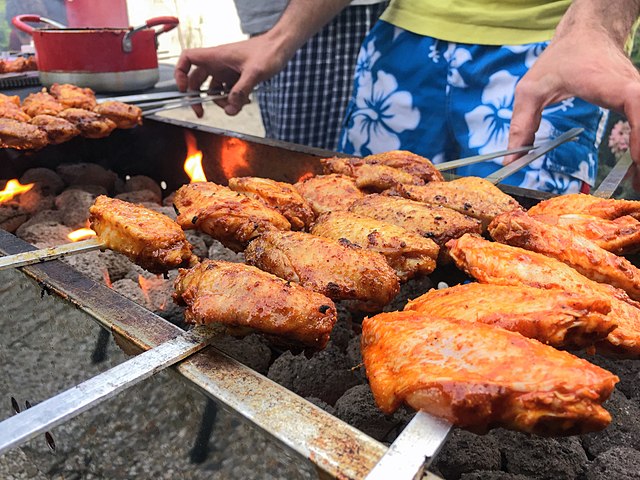Medieval cuisine includes foods, eating habits, and cooking methods of various European cultures during the Middle Ages, which lasted from the 5th to the 15th century. During this period, diets and cooking changed less than they did in the early modern period that followed, when those changes helped lay the foundations for modern European cuisines.
Peasants sharing a simple meal of bread and drink; Livre du roi Modus et de la reine Ratio, 14th century
Nuns dining in silence while listening to a Bible reading. The nuns use hand gestures to communicate. The Life of Blessed Saint Humility by Pietro Lorenzetti, 1341.
During the Middle Ages it was believed that beaver tails were of such a fish-like nature that they could be eaten on fast days; Livre des simples médecines, about 1480.
Banquet given in Paris in 1378 by Charles V of France (second from right) for Charles IV, Holy Roman Emperor (left), and his son Wenceslaus, King of the Romans. Each diner has two knives, a salt cellar, a napkin, bread and a plate (Banquet de Charles V le Sage, by Jean Fouquet, around 1455–60).
Chicken is the most common type of poultry in the world. Owing to the relative ease and low cost of raising chickens—in comparison to mammals such as cattle or hogs—chicken meat and chicken eggs have become prevalent in numerous cuisines.
Whole chickens for sale in a public market
Chicken wings being barbecued
Fried chicken
Oven-roasted chicken with lemon and rosemary








